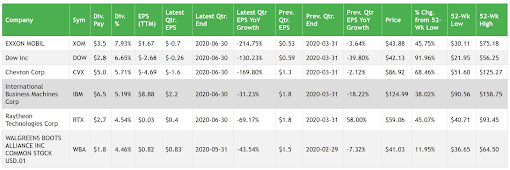In January 2021, during the start of the meme stock bubble, ViacomCBS (VIAC) stock started climbing from about $36. The stock kept on climbing until March 22, 2021, when it traded briefly above $100. Other than a few Wall Street banks, nobody knew why it was rising. Even the Wall Street banks did not have a complete picture. It was also around the Super Bowl, so CNBC host Jim Cramer speculated that it might have had something to do with all the Paramount+ ads that aired during the Super Bowl. Paramount+ is ViacomCBS's streaming brand.
But, Bob Bakish, the CEO of ViacomCBS, did not care about why the stock was rising. He needed all the money he could get to feed his company's push into the streaming business, and with the stock trading at an all-time high, he decided to make use of the opportunity. So, the company sold 10 million preferred shares at $100 with a 5.75% yield and issued a further 20 million of class B common stock. The class B common stock causes immediate dilution of existing shareholders.
Exhibit: The Spike in the Price of ViacomCBS During the Archegos Scandal
(Source: Seeking Alpha)
The dividend on the preferred works out to a quarterly dividend of $1.435. The preferred shares have a mandatory conversion clause that would take effect in April 2024. The preferred shares will convert between 1.0013 and 1.1765 into ViacomCBS common shares. Since the preferred stock is currently trading below the offer price of $100, each preferred share would be converted to a maximum of 1.1765 shares of the ViacomCBS common shares.
Once Bob made this announcement about the issuance of the common and preferred shares, the stock promptly tanked. Soon it became clear that ViacomCBS and Discovery (DISCA), Inc (home of HGTV, Food Network, and other channels, were both caught up in the Archegos Capital Management scandal that nearly brought down Credit Suisse. Other Wall Street banks booked millions of dollars in losses when they allowed Bill Hwang (owner of Archegos Capital Management) to speculate on the stocks of ViacomCBS and Discovery. Credit Suisse booked over $5 billion in losses due to the scandal.
Exhibit: Spike in Discovery Shares During the Archegos Scandal
(Source: Seeking Alpha)
The stock has flat-lined lately due to increased competition in the streaming business and the increased cost of customer acquisition. Did you notice the deal that Discovery was offering during the 2021 Thanksgiving break? Discovery offered three months of subscription at $0.99 per month.
ViacomCBS is a solid company with good cashflows, and its content library is top-notch. The preferred stock now offers a 10.6% dividend yield, which you can get until 2024. In early 2024, we can decide to either stay invested in the preferred shares or exit before the mandatory conversion date in April.
The debt to EBITDA multiple is at 4x. So, debt is a concern, and I prefer to see companies at a debt to EBITDA multiple 2x. One caveat to remember is that Discovery is acquiring Warner Media from AT&T. Discovery will have a 5x debt to EBITDA after the acquisition.
Exhibit: Debt to EBITDA Ratio for ViacomCBS, Walt Disney Co., and Discovery
(Source: Seeking Alpha)
The high level of debt may be negative, but the company has the cashflows to cover it. Its quick ratio is above 1 indicating that the company has the liquidity to cover the current liabilities.
Exhibit: Quick Ratio for ViacomCBS, Walt Disney Co., and Discovery
The company's return on equity is much higher than that of Walt Disney and Discovery and comes in at around 18%.
Exhibit: Return on Equity for ViacomCBS, Walt Disney, and Discovery
(Source: Seeking Alpha)
Its return on invested capital is higher than that of Walt Disney and Discovery.
Exhibit: Return on Invested Capital for ViacomCBS, Walt Disney, and Discovery
(Source: Seeking Alpha)
I own both ViacomCBS Class B (VIAC) and the preferred stock (
VIACP). I also own Discovery (DISCA), and Walt Disney (
DIS). But, I am most bullish about ViacomCBS. They have already acquired over 43 million customers. They have a customer acquisition deal with T-mobile to offer their Paramount+ subscription as part of their plan. That should bring in millions more customers to ViacomCBS.
Exhibit: Paramount+ Subscription Included in T-Mobile Cell Phone Service
(Source: T Mobile)
Finally, the company is trading at an EV to EBITDA multiple of just 6x and Discovery is trading at just around 3x. Disney is trading at an EV to EBITDA multiple of 34x. Both ViacomCBS and Discovery are trading at steep discounts. Yes, the competition is intense and the customer acquisition cost is high, but the content is top-notch. All media companies need content more than ever. But ViacomCBS will thrive in the long term. The ViacomCBS' dividend on the preferred and the common is too good to pass up.













































